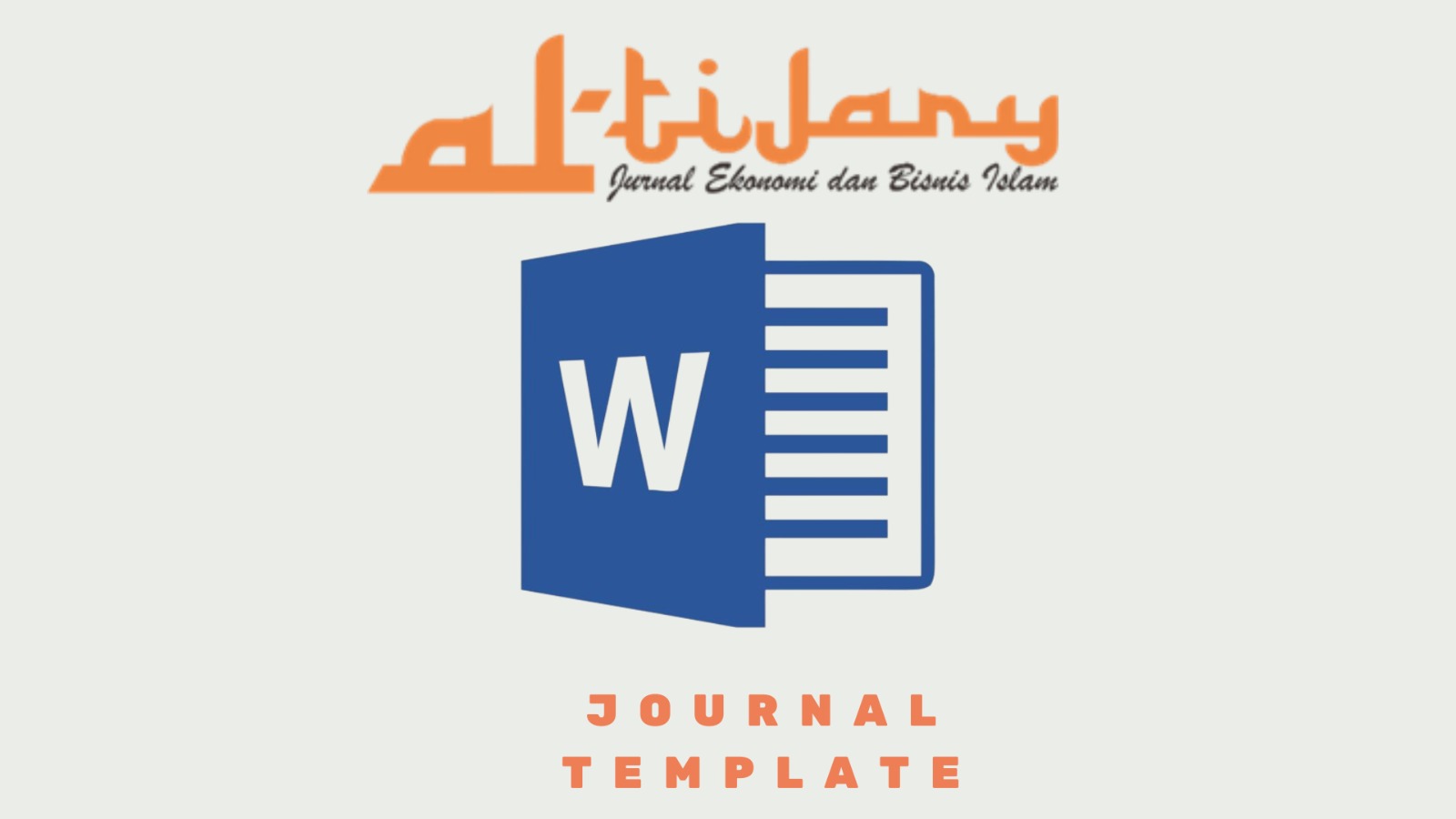The Impact of Productive Waqf's Implementation to the Development of Sharia Economics in South Kalimantan
Abstract
Waqf is one of the sources of Nation's income that can empower the sharia economy. The Implementation of waqf cannot be separated from the supervision of the Indonesian Waqf Board. Indonesian Waqf Board supervises at the provincial level as an independent institution tasked with empowering productive waqf. In this study, the supervisory process carried out by the Indonesian Waqf Board in South Kalimantan applies the empowerment of productive waqf by the Indonesian Waqf Board of South Kalimantan to the development of the sharia economy. This study aimed to determine how to implement the empowerment model applied by the Indonesian Waqf Board to the sharia economy. This research is a descriptive study with a sociological and normative approach. Data collection techniques through observation, interviews, documentation, and triangulation with the determination of informants through purposive snowball sampling. The results showed that from these results the implementation of (1) the waqf model for building construction in building facilities and infrastructure, and (2) the waqf model for business development covering agriculture, animal husbandry, and business units. The two models are then linked to management, including investment management and productive waqf distribution management. The management of the Indonesian Waqf Board in South Kalimantan implements the empowerment of Human Resources with the supervision of nazhir based on waqf law, sharia economic system, and waqf administration or entrepreneurship. The managerial process is inseparable from the leadership factor. Through direct supervision by South Kalimantan BWI staff and the Ministry of Religion, control is carried out to oversee productive waqf assets.
References
Achmad Junaidi & Thohieb al Asyhur. (2005). Menuju Era Wakaf Produktif. Mumtaz Publishing.
Adijani Al-Alabij. (1973). Perwakafan Tanah di Indonesia Dalam Teori dan Praktek. Rajawali Press.
Ahmad bin Muhammad Az-zarqa. (1989). Syarhu Al-Qawaid Al-Fiqhiyyah. Dar Al-Qalam.
Aini, N. & Nasri, R. (2018). Determinan Persepsi Nazhir Serta Implikasinya Terhadap Pengelolaan Wakaf Tunai (Badan Wakaf Indonesia). 561–586.
Al-Jamal, M. A. al-M. (1980). Mausu’ah al Iqtishad al-Islami. Dar al-Kitab al-Misr.
Al-Mishri, R. Y. (1993). Ushul al-Iqtishad al-Islami. Dar Al-Qalam.
Arie Santoso, dkk. (2018). Tafsir Ekonomi Islam Atas Konsep Adil Dalam Transaksi Bisnis. 4(No.1), Jurnal Al-Iqtishadiyah.
Badan Wakaf Indonesia. (n.d.). Fenomena Wakaf di Indonesia tantangan menuju Wakaf Produktif. Badan Wakaf Indonesia.
Departemen Agama RI. (2011). Alquran dan Terjemahnya. Sinar Baru Algensindo.
Departemen Agama RI. (2012). Peraturan Perundangan Perwakafan. Direktorat Pemberdayaan Wakaf Direktorat Jendral Bimbingan Masyarakat Islam.
Direktorat Pemberdayaan Wakaf. (2008). Model Pengembangan Wakaf Produktif. Direktorat Pemberdayaan Wakaf.
Direktorat Pemberdayaan Wakaf dan Direktorat Jendral Bimbingan Masyarakat Islam. (2008). Paradigma Baru Wakaf di Indonesia.
Ernie Tisnawati Sule & Kurniawan Saefullah. (2008). Pengantar Manajemen. Kencana Prenada. Kencana Prenada Media Grup.
Hasanuzzaman, S. M. (1984). Definition of Islamic economics. Journal Research Islamic Economics: Vol. 1(2). http://www.iefpedia.com/english/wp-content/uploads/2009/10/Definition-of-Islamic-Economics-by-S.-M.-Hasanuz-Zaman.pdf
Huda, N., Rini, N., Mardoni, Y., Anggraini, D., & Hudori, K. (2017). Manajemen Pengelolaan Wakaf Di Indonesia Timur. 20(1), 1.
Jaih Mubarok. (2018). Wakaf Produktif. Rekatana Media.
Khalid, M. M., Ashrof, M., Yaakob, Z., Bhari, A., & Yusof, F. M. (n.d.). Risk management in waqf institutions: A preliminary study.: Vol. 16(2).
M. Qurais Shihab. (2002). Tafsir Al-Mishbah, Pesan Kesan dan Keserasian Alquran Vol.9 (Vol. 9). Lentera Hati.
Mahmud Yunus. (1973). Kamus Arab Indonesia. Yayasan Penyelenggara Penerjemahan/Penafsiran Al-Qur’an.
Manan, M. A. (1980). Islamic Economic: Theory and Practice (A Comparative Study). Idarah Adabiyah.
Muhammad Daud Ali. (1988). Sistem Ekonomi Islam Zakat dan Wakaf. UI-Press.
Muhammad Muthafa Az-Zuhaily. (2009). Al-Qawai Al-Fiqhiyyah wa Tatbiqatiha fil Madzahib Al-Arbaah. Dar Al-Fiki.
Munzir Kahaf. (2005). Manajemen Wakaf Produktif (Muhyiddin Mas Rida, Trans.). Khlmifa.
Nur Khalidah, D., Noor Inayah, Y., Mohamad, A. H., & Mohd Rizal, P. (2014). Accounting Procedure and Management Cash Waqf in Indonesian Waqf Institutions. 5, 56–61.
Perdana, L. F., Susilowati, D., & Setyorini,C. T. (2018). Accounting Procedure and Management Cash Waqf in Indonesian Waqf Institutions. 3(1), 39.
R. I. Departemen Agama. (2007). Panduan Pemberdayaan Tanah Wakaf Produktif Strategis di Indonesia. Direktorat Pemberdayaan Wakaf.
Salmawati. (2019). Eksistensi tanah wakaf dalam pemanfaatannya untuk kemajuan kesejahteraan umum. 4, 153–165.
Shabbir, M. S. (2017). Classification and prioritization of waqf lands: A Selangor case. https://doi.org/10.1108/IMEFM-02-2017-0038
Shalih bin Ghanim As-Sadlan. (n.d.). Al-Qawaid Al-Fiqhiyyah Al-Kubra Wa Ma Tafarra’a ‘anha. Dar Al-Balansia.
Tim Dirjen Bimas Islam dan Penyelenggara Haji Depag RI. (2007). Pedoman PengelolaanWakaf Tunai. Penerbit Direktorat Pemberdayaan Wakaf.
Yusuf Ahmad Muhammad Al-Badawi. (1993). Maqasid As-Syariah I’nda Ibn Taimiyyah. Da An-Nafais.
Zainudin al-Malibary. (1980). Fathul Muinalih Bahasa terj Drs. H. Aliy As’ad (Drs. H. Aliy As’ad, Trans.). Menara Kudus.








